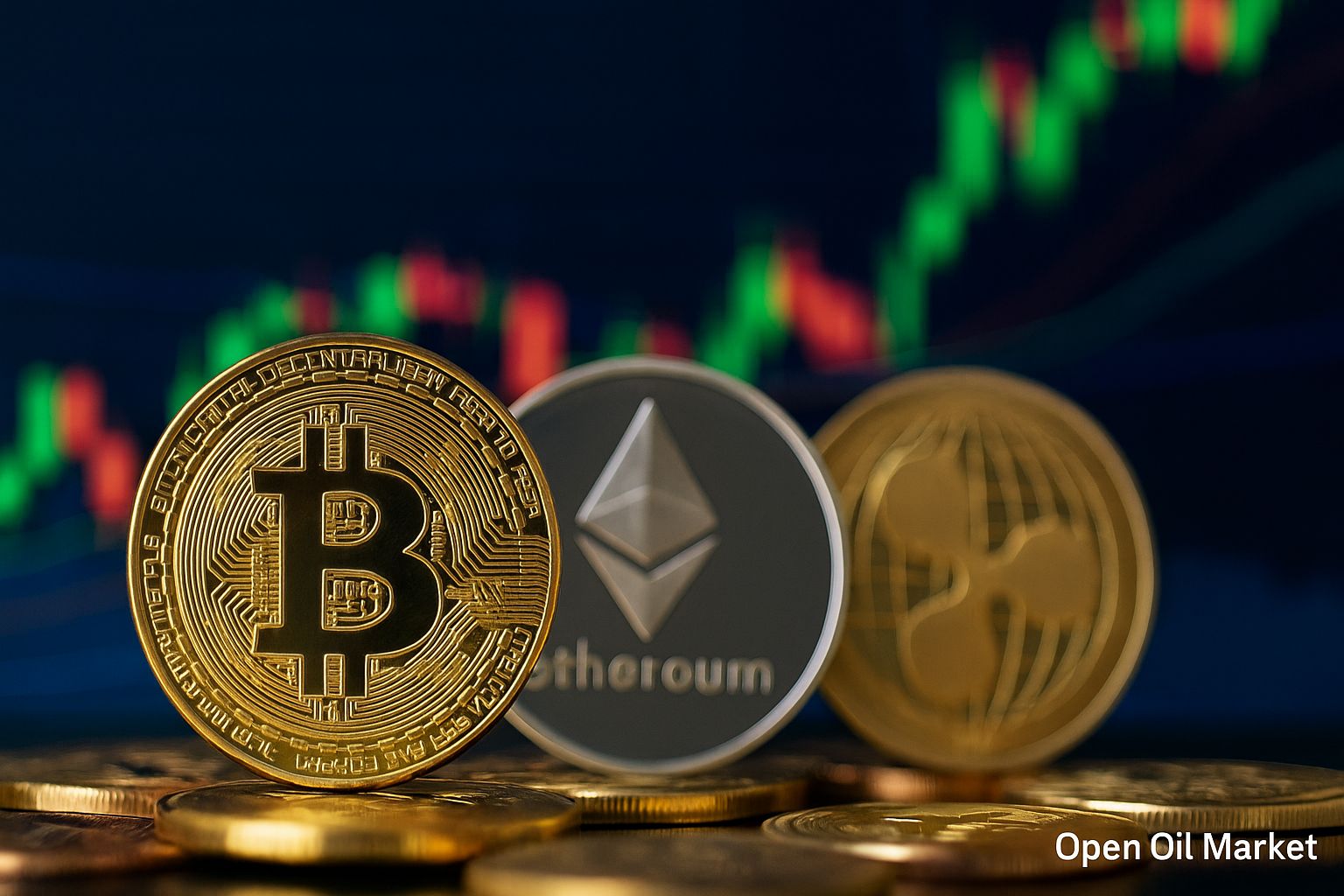
Main Startup and Venture Capital News – August 28, 2025: Mega-Rounds in AI, Growth of B2B Marketplaces, New IPOs, and Launch of Venture Funds. Analytics for Investors and Funds.
By the end of August 2025, the global venture capital market is confidently emerging from the prolonged downturn of previous years. Investors around the world are once again actively financing technology startups: record-breaking deals are being struck, and IPO plans for promising companies are back in the spotlight. Major funds and corporations have resumed substantial investments and are launching new venture programs, while governments worldwide are increasing support for innovative businesses. Private capital is gradually returning to the startup ecosystem, providing young companies with liquidity for growth and scaling.
Analysts estimate that the first half of 2025 was the most successful since 2021, in terms of total venture investments. In the U.S. and Canada alone, startups attracted approximately $145 billion during this period (+43% compared to last year) — a record for the past three years. The global inflow of capital significantly increased (preliminary data indicates around $190 billion for the half-year, which is 25% higher than the previous year), largely driven by a series of mega-funding rounds in artificial intelligence. Venture activity spans all regions: North America is especially dynamic (accounting for the lion's share of global investments, a significant portion directed towards the AI sector), while the Middle East has experienced a real investment surge. In Europe, there was a noticeable shift: Germany surpassed the UK in terms of venture investments for the first time in a decade, highlighting the strengthening of continental startup ecosystems. The situation in Asia is uneven: startup funding in China remains subdued, while India, Southeast Asia, and Israel are showing robust growth and attracting record capital. Even local markets (such as the CIS countries) are striving to capture the new wave of recovery despite external constraints. A new global venture boom is forming, although investors continue to act selectively and cautiously.
Below are the key events and trends shaping the current agenda of the venture market as of August 28, 2025:
- Return of mega-funds and large investors. Leading venture players are forming record funds and increasing their investments, once again saturating the market with capital and igniting risk appetite.
- Mega-rounds in AI and new unicorns. Unprecedented investments are elevating the valuations of startups to unseen heights, especially within the AI segment.
- Revival of the IPO market. Successful public offerings of tech companies and new applications confirm that the long-awaited "window" for exits has reopened.
- Diversification of industry focus. Venture capital is directed not only into AI, but also into fintech, climate projects, biotech, defense technologies, and even crypto startups, broadening market horizons.
- Wave of consolidation: rise in M&A deals. Major mergers, acquisitions, and strategic investments are reshaping the industry landscape, creating new exit opportunities and accelerating the growth of companies.
- Digital B2B marketplaces and platforms. Online platforms that directly connect business buyers with suppliers are attracting investor attention and transforming traditional industries.
- Global expansion of venture capital. The investment boom is spreading to new regions — from Gulf states and South Asia to Africa and Latin America — where their own tech hubs are emerging.
- Local focus: Russia and CIS countries. Despite restrictions, new funds and initiatives are emerging in the region to develop local startup ecosystems, increasing investor interest in local projects.
Return of Mega-Funds: Big Money Back in the Market
The biggest investment players are making a triumphant return to the venture arena, signaling a new growth in risk appetite. Japan's SoftBank, having weathered the downturn, announced the launch of Vision Fund III, with a volume of approximately $40 billion, focused on cutting-edge technologies (with a priority on artificial intelligence and robotics). At the same time, sovereign funds from Gulf countries have ramped up their activities: they are pouring billions into innovative projects and developing state mega-programs to support the startup sector, creating their own tech hubs in the Middle East. In addition, dozens of new venture funds (including corporate ones) are being established worldwide, attracting significant institutional capital for investments in high-tech sectors.
Leading Silicon Valley investors are not lagging behind. In the U.S. venture sector, funds have accumulated unprecedented reserves of uninvested capital ("dry powder") — hundreds of billions of dollars ready to be deployed as confidence returns to the market. For example, the venture firm Andreessen Horowitz (a16z) is forming a new mega-fund of approximately $20 billion, primarily targeting investments in American AI startups. The influx of "big money" is filling the startup market with liquidity, providing resources for new rounds and supporting the growth of promising company valuations. The return of mega-funds and large institutional investors not only intensifies the competition for the best deals but also instills confidence within the industry regarding further capital inflows.
Mega-Rounds in AI and New Unicorns
The artificial intelligence sector is the main driving force behind the current venture upturn, showcasing record financing amounts. Investors are directing colossal funds into the most promising AI projects, raising startup valuations to unprecedented heights. For instance, several major recent rounds include:
- Databricks (USA) – raised investments in a Series K round, increasing its valuation by 61% (to over $100 billion).
- xAI (USA) – Elon Musk's startup received about $10 billion (including venture and debt financing) and reached a valuation of around $100 billion, making it one of the world's most valuable AI companies.
- OpenAI (USA) – secured an additional tranche of around $8 billion at a valuation of roughly $300 billion; this mega-round was significantly oversubscribed, highlighting the excitement around industry leaders.
These unprecedented deals reflect the enormous appetite of investors for the AI sector. Capital is flowing into the development of large language models, generative AI, robotics, and other areas capable of radically transforming industries. The value of sector leaders is skyrocketing in a short time, and competition among funds for promising AI projects is incredibly high.
Revival of the IPO Market
After a prolonged hiatus, tech companies are once again going public — and with great success. The year 2025 has been marked by a series of successful public offerings that instill optimism in venture investors regarding exit prospects. Since the beginning of the year, 222 IPOs have taken place on U.S. exchanges — an 86% increase compared to the same period of 2024, indicating a tangible revival in the market. Among the significant recent debuts:
- Figma (USA) – a software developer for designers successfully debuted on the NYSE with a valuation of around $18 billion; high investor demand allowed the stock to be priced above the projected range, ensuring a rise in quotes during the first days of trading.
- Circle (USA) – the issuer of the USDC stablecoin went public in June; the company's capitalization now exceeds $40 billion, having seen its stock increase more than 5 times from the IPO price.
- CoreWeave (USA) – a cloud infrastructure provider for AI went public in spring (~$30 billion valuation at IPO) and by the end of summer had risen to a capitalization of about $52 billion, more than doubling its stock price in response to the demand for AI resources.
The success of these debuts restores faith in the public market as an exit mechanism for venture projects. Observing the rapid rise in the quotes of new issuers, many late-stage startups are once again considering IPOs as a viable opportunity, postponing further private rounds. New candidates for listing are lining up — for example, the cryptocurrency exchange Gemini and custodial service BitGo have already submitted IPO applications, hoping to take advantage of the favorable situation. The vigorous revival of the IPO window promises a liquidity influx to the ecosystem and may attract new investors willing to finance the next cycle of technological innovations.
Diversification of Industry Focus
Venture capital is being directed not only into AI but also into a wide range of other industries, expanding market horizons. Fintech startups are once again attracting significant investments amid the digitization of financial services. Climate and "green" technologies are at the forefront of investor attention due to global demand for sustainable solutions. Biotech and medical projects are receiving enhanced funding, particularly in genetics and pharmaceuticals, leveraging the lessons of the pandemic and advances in life sciences. Defense developments and cybersecurity are experiencing an upturn due to the geopolitical situation — a number of startups in military technologies and security have managed to attract rounds in the hundreds of millions of dollars with support from both private funds and government programs.
Even the crypto industry is emerging from the shadows after a downturn period. In the second quarter of 2025, global investments in blockchain startups exceeded $10 billion (the highest in recent years), signaling a new "crypto renaissance." Investors are once again showing interest in fintech projects involving digital assets, DeFi platforms, and blockchain infrastructure solutions, hoping for market growth and greater regulatory certainty. Thus, venture flows are diversifying by sectors: from finance and energy to healthcare, defense, and Web3, reducing market dependence on solely the AI boom and creating new growth points.
Wave of Consolidation: Rise in M&A Deals
Amid the industry's upturn, a wave of mergers and acquisitions is gaining momentum. Major technology corporations and mature unicorns are actively acquiring promising startups, integrating new technologies and talent. In the first half of 2025, acquisitions of startups exceeding $100 billion were announced, approximately 155% higher than the previous year’s level. Companies are willing to spend record sums on strategic acquisitions, especially in the fields of artificial intelligence and cybersecurity, where competition for leadership is most fierce.
Thus, the current M&A activity not only provides venture funds with much-anticipated exits but also significantly reshapes the industry landscape. The consolidation of players through mergers and acquisitions accelerates the introduction of new technologies into the market and allows startups to scale faster under the wing of large partners. For investors, the wave of consolidation means potential capital returns through the sale of portfolio companies, while for the industry as a whole, it signifies the formation of more resilient and competitive unified businesses.
Digital B2B Marketplaces and Platforms
Digital B2B marketplaces are experiencing rapid development — online platforms that directly connect business suppliers and buyers, bypassing traditional intermediaries. Venture investors are increasingly investing in such models, seeing enormous potential for increasing the efficiency of entire industries: from energy and manufacturing to agriculture and logistics. These platforms enable companies to find each other faster and more profitably, closing deals and optimizing supply chains, effectively modernizing the conservative B2B sector.
A notable example is the startup Open Oil Market — a digital marketplace for petroleum products that directly connects fuel suppliers and buyers. The project has managed to attract strategic partners and successfully conducted preliminary funding rounds, as well as announced plans to go public in 2027. Similarly, other sectors are seeing the emergence of their own B2B platforms (in construction, raw materials trading, transportation, etc.). Many of these are rapidly scaling and vying for unicorn status as they modernize traditional markets through technology. The development of B2B marketplaces has become a global trend, reflecting the digitization of the classic B2B segment and attracting substantial venture investments.
Global Expansion of Venture Capital
In 2025, the geography of venture investments is sharply expanding. In addition to the usual centers such as the U.S. and China, the investment boom is sweeping new markets across the globe. In the Middle East, Gulf states are directing record amounts of funding into startups through sovereign funds, creating powerful tech hubs in the UAE and Saudi Arabia. In South Asia, the Indian and Southeast Asian ecosystems are rapidly growing, attracting unprecedented volumes of capital. Africa is also making its presence felt: the success of several projects from Nigeria, Egypt, and Kenya is drawing global investors' attention to the African continent. For instance, data from the first half of 2025 include:
- Middle East (MENA): startups in the region attracted ~$2.1 billion in the first half of 2025 (+134% year-on-year); the UAE and Saudi Arabia contributed the most to this growth.
- Africa: funding for African startups reached ~$1.35 billion over 6 months in 2025 (a 78% increase compared to the previous year); record deals occurred in Nigeria, Egypt, and Kenya.
- Latin America: venture funding in the region grew by 16% in the second quarter of 2025 (quarter-on-quarter); Mexico has overtaken Brazil in terms of capital raised for the first time since 2012 due to several major rounds (e.g., the Mexican fintech company Klar raised $170 million).
Europe is also strengthening its position: Germany, France, and Scandinavian countries have increased venture investments, while in the UK post-Brexit growth has slowed. In Asia, the picture is mixed: while investment levels in China are declining, India, Southeast Asia, and Israel are showing a steady rise, with Israel breaking records for deals over the past two years. Even in less developed markets in Africa and Latin America, homegrown "unicorns" are emerging, and local authorities and corporations are actively supporting technological initiatives. Thus, the global startup ecosystem is becoming more distributed: new innovation centers are gaining strength outside the traditional capitals of the venture world.
Local Focus: Russia and CIS Countries
Despite geopolitical upheavals, the venture market in Russia and the CIS continues to develop and adapt to new conditions. New private funds and corporate accelerators are emerging with the involvement of banks and industrial companies. Development institutions (such as the Skolkovo Foundation) are offering startups grants, tax incentives, and co-financing programs, partially compensating for the outflow of Western capital. Local investors are increasingly focusing on the domestic market and partners from friendly countries in the Middle East and Asia, filling the gap left by departing players.
A notable example is the regional foodtech startup Qummy (Krasnodar), which raised 440 million rubles in investments at a valuation of about 2.4 billion rubles and announced plans to go public in the coming years. Additionally, several large financial and industrial entities have launched their own venture funds to support technologies. For instance, PSB has created a fund worth 12 billion rubles, the investment firm Kama Flow has established a fund of 10 billion rubles, and the Tinkoff ecosystem is developing the T-Invest fund to invest in rapidly growing domestic projects. In 2025, authorities have also officially allowed the attraction of foreign capital (from "friendly" countries) for transactions involving Russian tech companies, which could potentially open doors for new investments in the sector.
Although the absolute volume of venture investments in the region remains modest, it is steadily growing. According to the Russian Venture Company (RVC), in the first half of 2025, about $80 million was invested in Russian technology startups — approximately 70% more than the previous year (even though this still accounts for a fraction of the global market). Local investors are focusing on projects in AI, import substitution, cybersecurity, and B2B services. Gradually, a new wave of technological entrepreneurs capable of developing businesses in challenging conditions is forming. The regional startup ecosystem is striving to take advantage of the global upturn in order to lay the foundation for future growth — even if it requires more time and strong domestic support.




